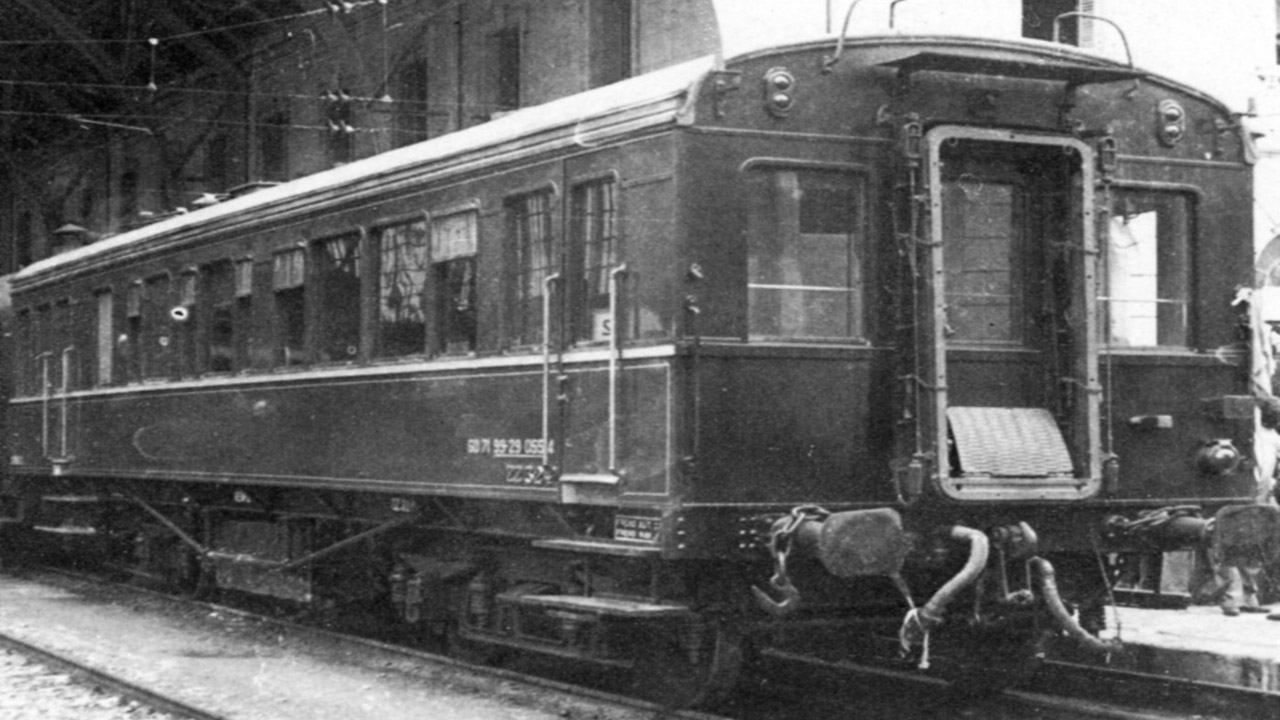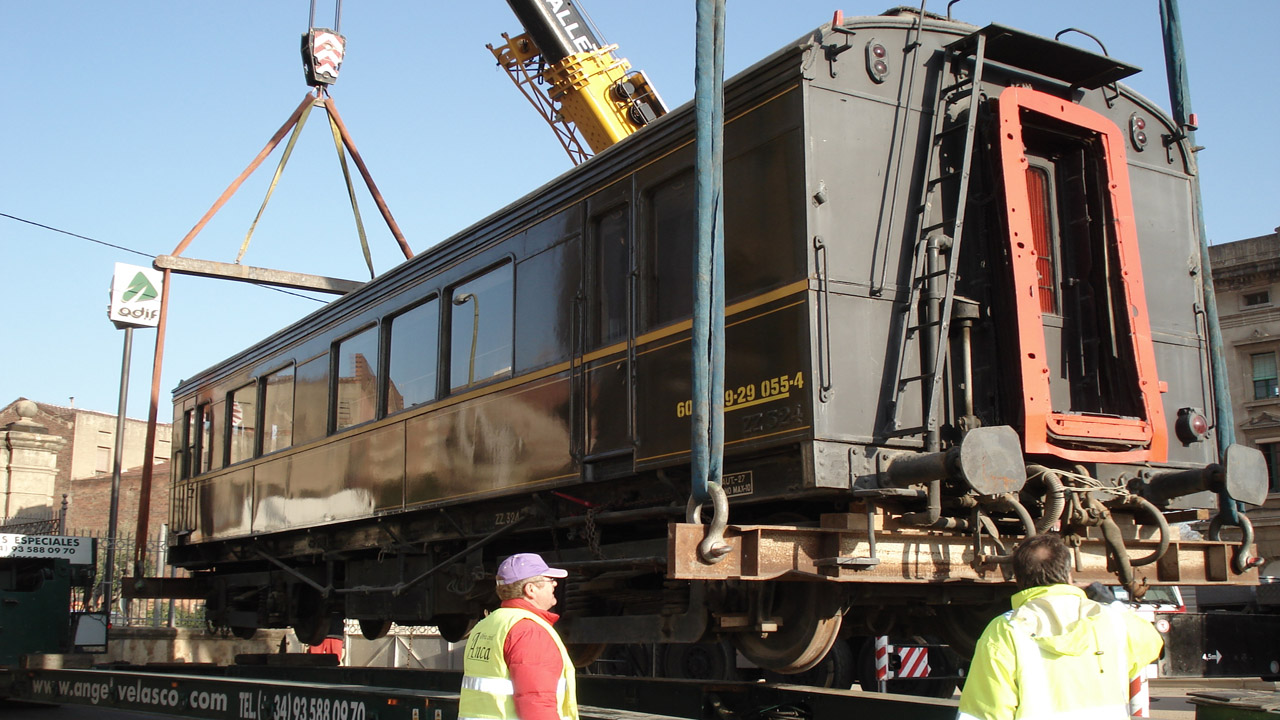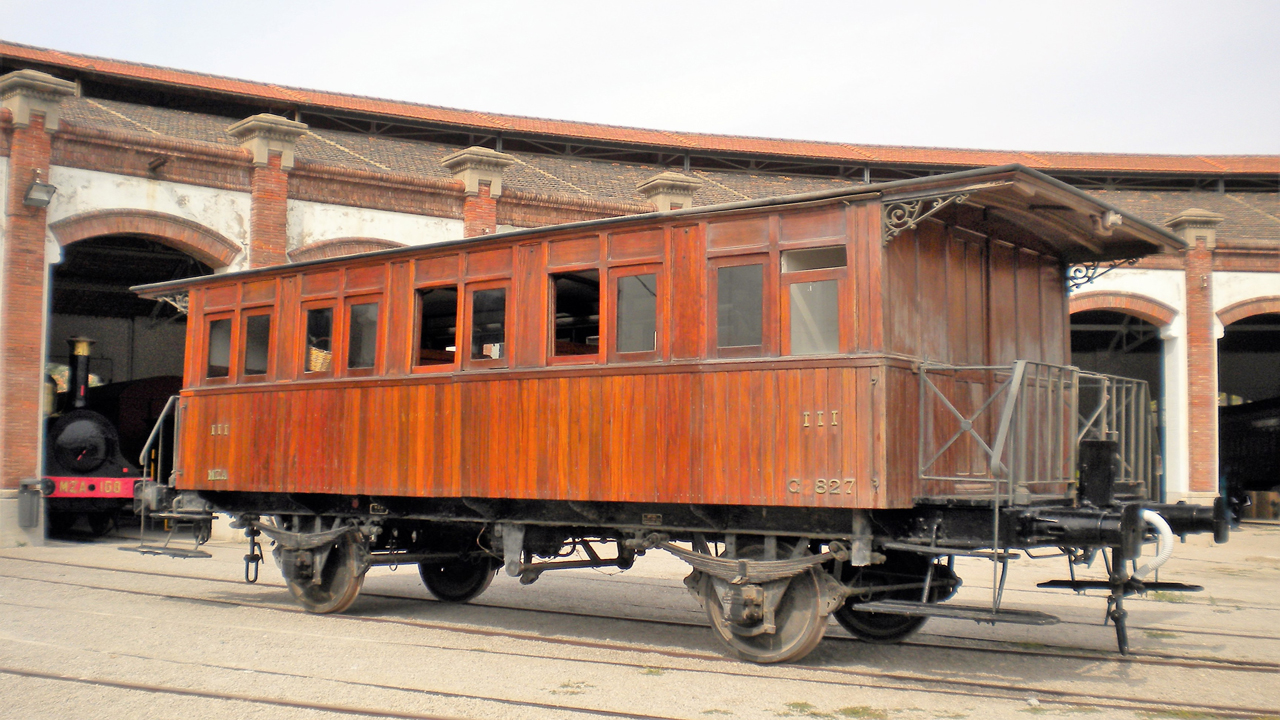
Detail of the car tester "ZZ-324" parked at the Barcelona´s Francia Station

Car scheme "ZZ-324"

Passenger car "ZZ-324" parked at the Sagrera Station, 2011

Transfer from Sagrera Station, 2011

Transfer from Sagrera Station, 2011

"Tercera" car parked at the Museum
9 - Passenger cars collection
On the first tracks of the Rotonda (Rotonda) building, we
come across a collection of seven cars –cars were used to
transport passengers while wagons were for freight. The
first track features a third-class car, which gives us an
idea of the harsh travelling conditions in the 19th century
and in more than half of the 20th century. The steam and
soot from steam locomotives frequently entered the
compartment, especially when going through tunnels, which
meant that the passengers reached their destination with
blackened faces and dirty clothes. As the Museum shows, the
first vehicles for transporting passengers were very
primitive, being very similar to the stagecoaches, carriages
or covered wagons on which they were based, as we can see in
the three cars that make up the “Centennial Train.”
What was truly outstanding about the railway’s appearance
was the opportunity of transporting a large number of people
at the same time, which facilitated great waves of migration
and their important consequences, from a social,
demographic, urban development or economic perspective.
Until its appearance, the possibilities of movement were
limited to members of the upper classes. Some studies claim
that most people did not travel more than 15 km from their
home locality in their entire life. Another noteworthy
change was that, for the first time, it obliged people of
different social categories to mix together in trains and
stations, something that was previously unthinkable. It was
a real revolution for the world of that time. The railway
democratised collective passenger transportation.
This area of the Museum reveals the bottom parts of the
cars. We can see how the wheels evolved from the initial
two-wheeled axles to the so-called bogies, undercarriages
with two or more axles, each with two wheels, beneath the
vehicle. The Museum features two models of these elements,
which give us a close-up look at how this system improved
suspension, curving performance and enabled the construction
of larger cars. Trains have constantly been evolving from
the very beginning and the innovations incorporated into
wheel systems have resulted in increased comfort and safety.


